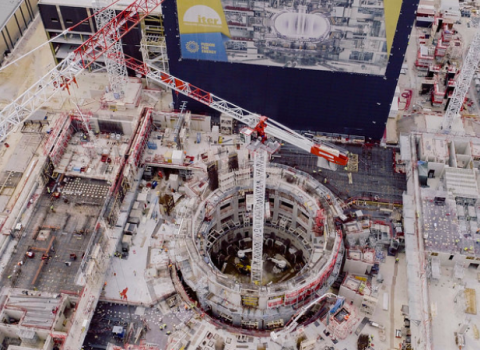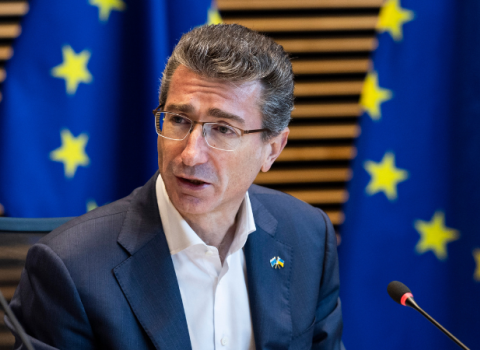Germany has an excellent research and innovation system with a clear division of labor. Each institution makes its own important contribution to the innovation chain. Fraunhofer stands for applied research and the transfer of technology, while DESY develops and operates leading infrastructures that serve as catalysts for technology developments and innovation processes. In order to address economic and social challenges and ensure Germany’s and Europe’s technological sovereignty, it is crucial to pool expertise, infrastructure and knowledge across the boundaries of individual research institutions and to translate this into innovations in a targeted fashion. “The collaboration agreement between DESY and Fraunhofer is an important step to promote innovations, facilitate technology transfer and strengthen Germany’s competitiveness as an industrial location. In times of economic and social challenges, it is essential to pool mission-specific expertise, infrastructure and knowledge across individual research institutions and to translate this into innovations in a planned and targeted manner. This close collaboration will enable us to expedite the transfer of cutting-edge research and the latest findings to practical applications and make them accessible for industry,” explains Holger Hanselka, President of the Fraunhofer-Gesellschaft.
Helmut Dosch, Chairman of the DESY Board of Directors, emphasizes the importance of research infrastructures: “Working more closely with the various Fraunhofer institutes will allow us to improve access to our DESY analytics for applied research and further industrial use. We look forward to working with the Fraunhofer-Gesellschaft to further expedite innovations and the transfer of cutting-edge technologies for a sustainable and competitive society.”
Fraunhofer institutes to use DESY's cutting-edge infrastructure
DESY is one of the world's leading particle accelerator centers. Its facilities, including the PETRA III X-ray radiation source, offer a platform for world-class research. PETRA III is a state-of-the-art 3rd generation X-ray light source that facilitates excellent research results. Its planned successor, PETRA IV, a 4D X-ray microscope to be commissioned in 2032, is expected to be the world’s most powerful radiation source by the time it is operational. PETRA IV will make it possible to precisely analyze complex materials and processes on the nanometer scale under conditions relevant for industry, medicine and the environment, thereby strengthening the foundation for knowledge-based material and drug design.
The collaboration with Fraunhofer will enable DESY to develop its infrastructure into a hub for international talent in the fields of industrial research and development. Fraunhofer researchers, in turn, will benefit from priority access to X-ray-based analytics. Plans also call for a customized access model aimed at facilitating the use of the research infrastructure and the associated X-ray-based analytical methods. This would enable researchers to address current industry issues with a high degree of validity.
Framework agreement for scientific collaboration
On November 13, 2023, the Fraunhofer-Gesellschaft and DESY, together with Helmholtz-Zentrum Hereon and the European Molecular Biology Laboratory EMBL, signed a memorandum of understanding, expressing their interest in establishing a collaboration for synchrotron experiments at PETRA III and, in the future, at PETRA IV. Initial projects have already demonstrated the potential of this close collaboration. Until the end of 2024, 23 projects with a total of over 1500 hours of PETRA III beam time were launched in the pilot phase.
Examples of the ongoing collaboration include technology developments. For example, researchers from the Fraunhofer Institute for Silicon Technology ISIT have developed a mirror system to comprehensively scan samples for X-ray examination at PETRA III (similar to laser scans). Another successful example is an interdisciplinary partnership between DESY, the Fraunhofer Institute for Microstructure of Materials and Systems IMWS, the Max Planck Institute for Human Cognitive and Brain Sciences, and Leipzig University, in which researchers examined brain samples at a PETRA III beamline. The aim of the joint project is to use the data obtained to characterize the structure of brain fibers and link them to brain functions. These findings are to be used for the further development of MRI techniques.
Deutsches Elektronen-Synchrotron DESY
DESY is one of the world’s leading particle accelerator centres and investigates the structure and function of matter – from the interaction of tiny elementary particles and the behaviour of novel nanomaterials and vital biomolecules to the great mysteries of the universe. The particle accelerators and detectors that DESY develops and builds at its locations in Hamburg and Zeuthen are unique research tools. They generate the most intense X-ray radiation in the world, accelerate particles to record energies and open up new windows onto the universe. DESY is a member of the Helmholtz Association, Germany’s largest scientific association, and receives its funding from the German Federal Ministry of Education and Research (BMBF) (90 per cent) and the German federal states of Hamburg and Brandenburg (10 per cent).
- Research News - Fraunhofer and DESY Launch Strategic Collaboration to Promote Innovation and Research [ PDF 0.28 MB ]
- Deutsches Elektronen-Synchrotron DESY
This article was first published on 25 February by Fraunhofer.





 A unique international forum for public research organisations and companies to connect their external engagement with strategic interests around their R&D system.
A unique international forum for public research organisations and companies to connect their external engagement with strategic interests around their R&D system.